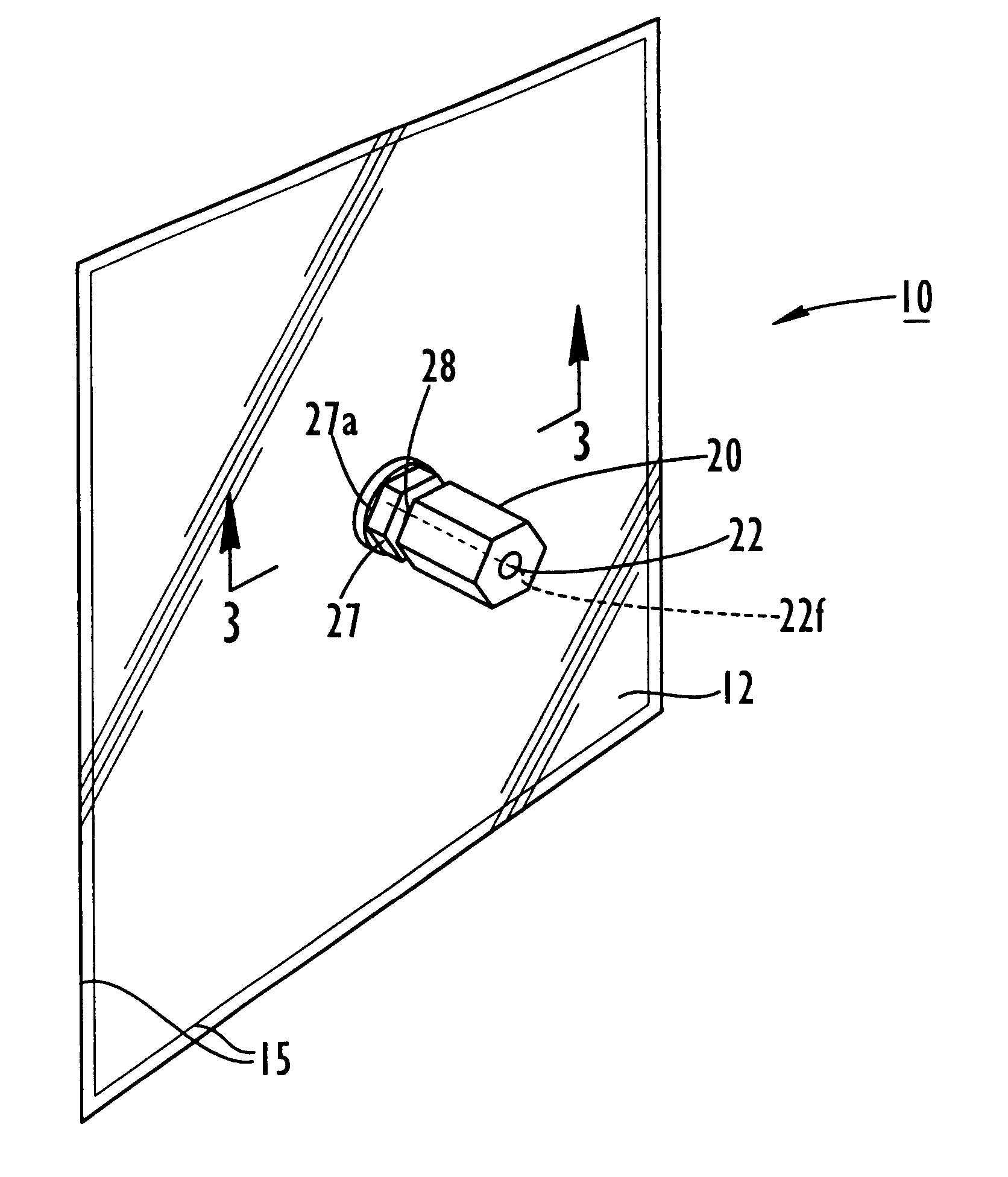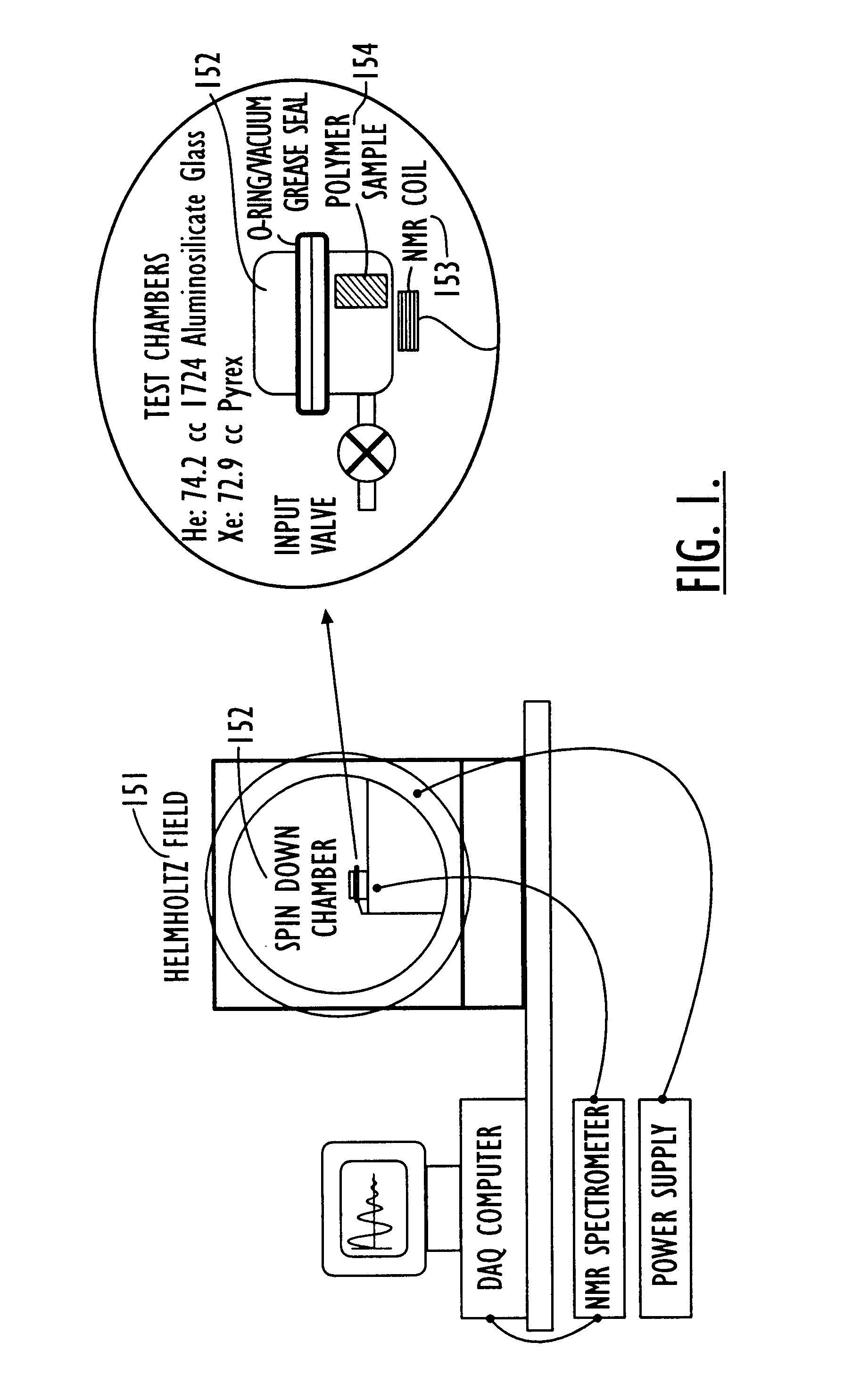Resilient containers for hyperpolarized gases and associated methods
a technology of hyperpolarized gas and containers, applied in the direction of liquid dispensing, non-pressured vessels, dispensing, etc., can solve the problems of hyperpolarized gas deterioration or decay, less than satisfactory images, and relatively rapid decay from the polarized state, so as to reduce the exposure to potentially depolarizing materials, reduce stress/strain, and reduce the effect of stress or strain
- Summary
- Abstract
- Description
- Claims
- Application Information
AI Technical Summary
Benefits of technology
Problems solved by technology
Method used
Image
Examples
example 1
.sup.3 He LDPE / HDPE Bag
An exemplary one liter patient delivery bag, such as is shown in FIG. 7, is a 7 inch.times.7 inch square. The expected T.sub.1 for .sup.3 He can be determined using (Equation 2.4) and the theoretical relaxivity of LDPE for .sup.3 He quoted in Table 4.3. The associated area (A=2*18 cm* 18 cm) is 648 cm.sup.2, the volume is 1000 cubic centimeters, and the relaxivity is 0.0012 cm / min. Equation 2.4 leads to a T.sub.1 of about 1286 min or 21.4 hours for an LDPE bag configured and sized as noted above (absent other relaxation mechanisms). For a bag made of HDPE, which has a lower relaxivity value of about 0.0008 cm / min (attributed to the lower .sup.3 He solubility), the T.sub.1 is estimated at 32 hours. In deuterated HDPE, the T.sub.1 is expected to be about 132 hours.
example 2
.sup.129 Xe LDPE / Nylon Bag
The same 1 liter LDPE patient delivery bag as described in Example 1 contains hyperpolarized .sup.129 Xe. Volume and surface area are the same but the theoretical relaxivity is 0.0419 cm / min (Table 4.2) for .sup.129 Xe on LDPE. The relaxivity is much higher because of the higher solubility of .sup.129 Xe in LDPE compared to He (S.sub.Xc =0.68 vs S.sub.He =0.006). For this configuration, T.sub.1 is estimated at 36.8 minutes. Similarly, for the measured relaxivity for Nylon-6 of 0.0104 cm / min, predict T.sub.1 is predicted to be about 148 min or about 2.4 hours. This value is close to what has been measured for the presently used Tedlar.TM. bags.
example 3
Metal Film Surface
In this example, metal film coatings are used as the contact surface. The 7".times.7" square bag described in Example 1 is employed but coated or formed with high purity aluminum on its internal contact surface (the surface in contact with the hyperpolarized gas). The relaxivity of high purity aluminum for .sup.129 Xe has been recently measured to be about 0.00225 cm / min. (One readily available material suitable for use is Reynold's.TM. heavy duty freezer foil). Doing the calculation, one can obtain a container with an extended T.sub.1 for xenon of about 11.43 hours. This is a great improvement in T.sub.1 for Xe. Similarly, the use of such metal film surfaces for 3He can generate T.sub.1 's in the range of thousands of hours (the container no longer being a limiting factor as these T.sub.1 's are above the theoretical collisional relaxation time described above). Metals other than aluminum which can be used include indium, gold, zinc, tin, copper, bismuth, silver, ...
PUM
| Property | Measurement | Unit |
|---|---|---|
| Length | aaaaa | aaaaa |
| Fraction | aaaaa | aaaaa |
| Time | aaaaa | aaaaa |
Abstract
Description
Claims
Application Information
 Login to View More
Login to View More - R&D
- Intellectual Property
- Life Sciences
- Materials
- Tech Scout
- Unparalleled Data Quality
- Higher Quality Content
- 60% Fewer Hallucinations
Browse by: Latest US Patents, China's latest patents, Technical Efficacy Thesaurus, Application Domain, Technology Topic, Popular Technical Reports.
© 2025 PatSnap. All rights reserved.Legal|Privacy policy|Modern Slavery Act Transparency Statement|Sitemap|About US| Contact US: help@patsnap.com



